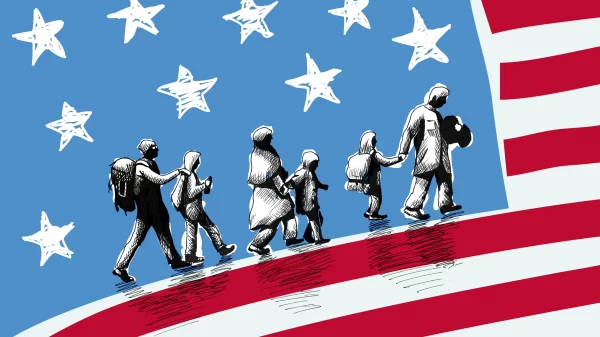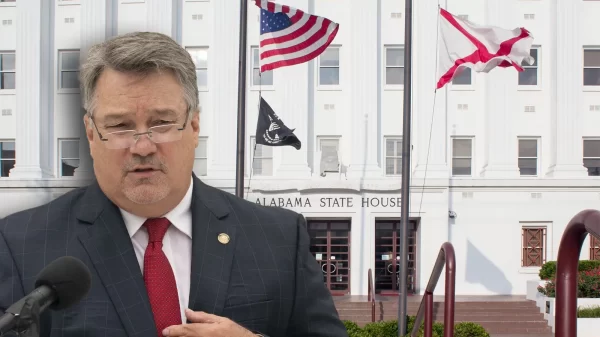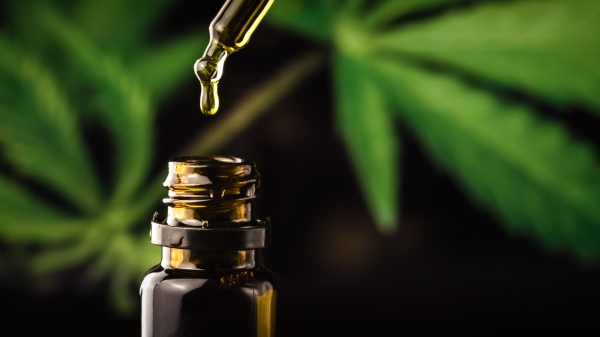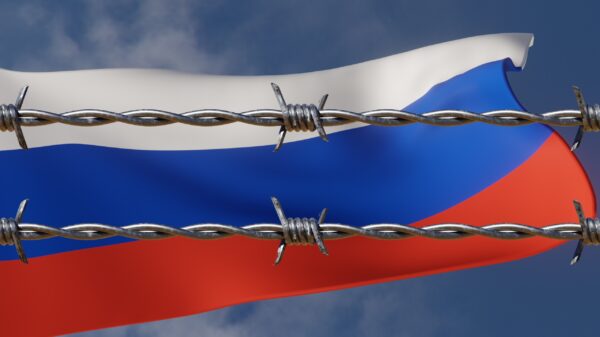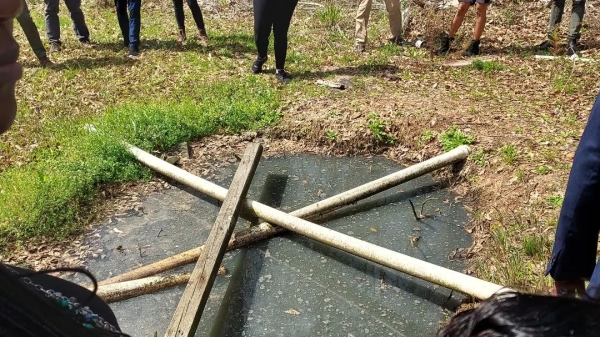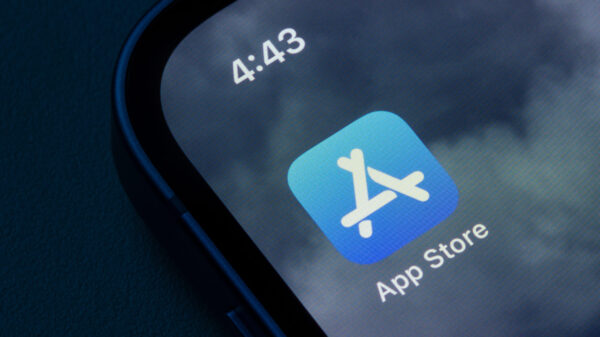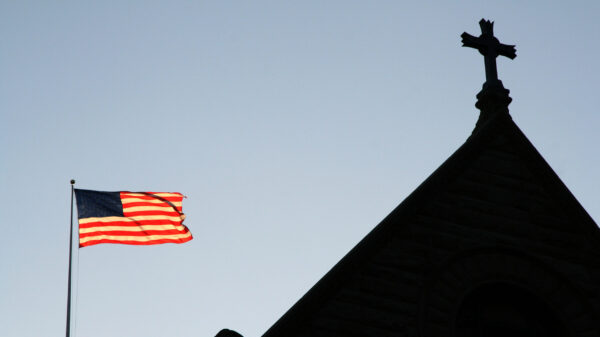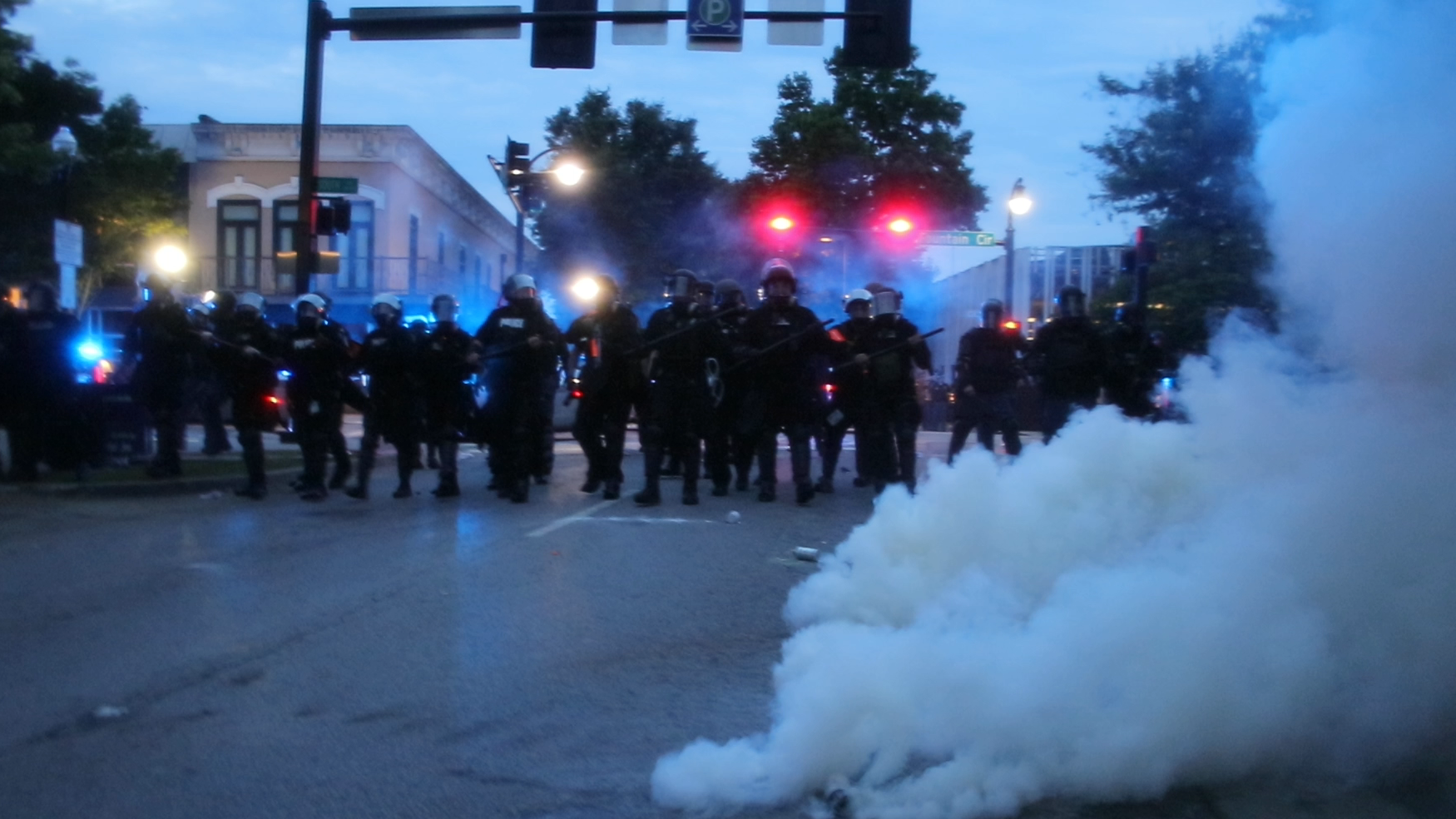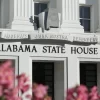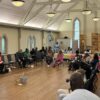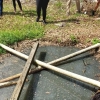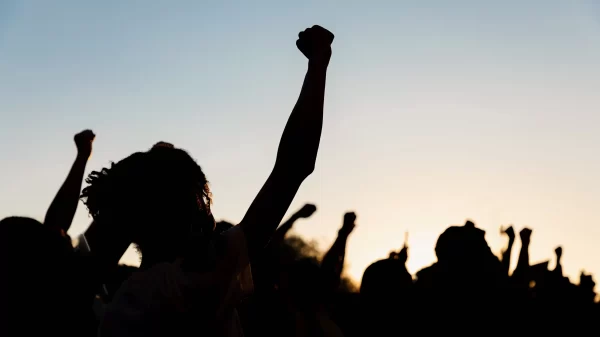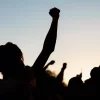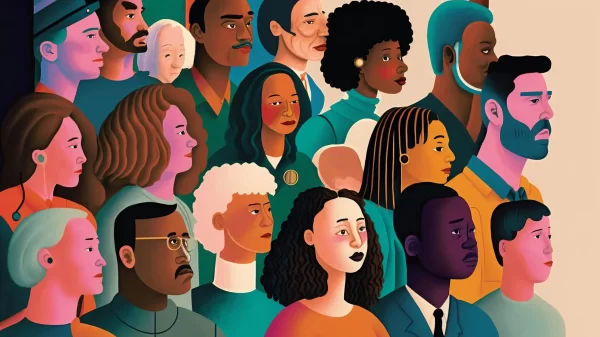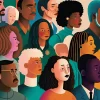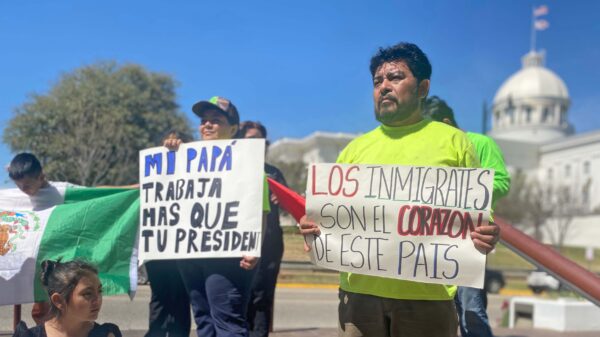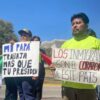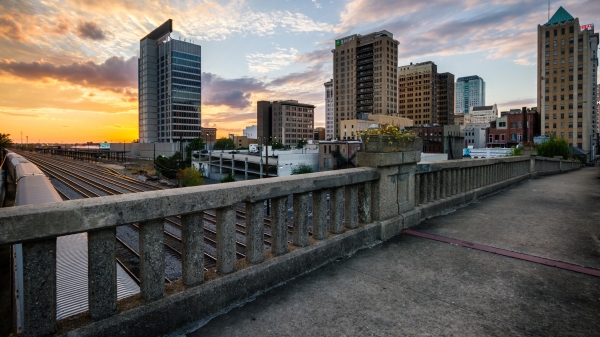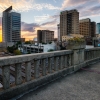|
Getting your Trinity Audio player ready...
|
APR recently spoke with an individual who was involved in the 2020 Black Lives Matter protests in Huntsville. Those protests occurred in the wake of the infamous murder of George Floyd by Minneapolis police, as Americans across the country called for reform to address police brutality. The protestor, who wished to remain anonymous, was a 23-year-old Huntsville resident and recent college graduate at the time of the protests.
Motivated by the injustice of Floyd’s murder and the mobilization of others in his community, the protestor joined a large group of demonstrators to conduct a peaceful protest in front of the Madison County Courthouse on June 3, 2020.
According to contemporary reporting, the demonstration was entirely peaceful and no property damage was reported at the time. “People were trying to keep others in check,” the protestor told APR. “Making sure they weren’t breaking any rules on accident, like staying on the sidewalks… there was a lot of chants [sic], moments of silence…”
However, the protest ended with members of the Huntsville Police Department, Madison Police Department, Madison County Sherrif’s Office, and Alabama Law Enforcement Agency forming a blockade and firing bean bags, rubber bullets, and tear gas at the demonstrators. It was during that violence that the protestor claims he was shot with five rubber bullets, one striking him in the leg and leaving him seriously injured.
The protestor shared images of a deep wound to his leg which he initially thought to be the result of a ricocheting tear gas canister. After being wounded, he left the protest and went to seek treatment at Huntsville Hospital.
According to the protestor, the police instigated the violence after protestors refused to heed commands to disperse. Following the events, Huntsville Police Chief Mark McMurray called the protestors “anarchists” and blamed the use of force on the peaceful demonstrators.
“We kept asking them to leave,” McMurray said at the time. “They brought this — this group brought this on themselves. They came here for the fight, not us.”
The protestor told APR that there was no official curfew in place at the time of the protests. The protestor also expressed that he believes the police came to the peaceful demonstration with the intention to escalate the situation into violence.
He described fleeing the protest after being injured, saying that other protestors who saw his wound were “kind of amazed that happened, I mean really surprised.”
“We don’t know what caused that to my leg… to me, to people around me, they just see this huge gash in my leg, and that’s something that I don’t think anyone was expecting,” he said. “I don’t know if even the police were expecting that level of injury to happen to a protestor, but it did.”
“The report talks about one officer that was fired that day and it makes me think, is he the one who like shot me with this ‘test & evaluate’ round?” the protestor continued, referencing an officer who implied that HPD was using untested munitions provided by manufacturers during the protest so that they could evaluate their efficacy before the department made a formal purchase.
“If such were the case, it could explain why the munitions, if used, were not accounted for in HPD’s inventory and why Chief McMurray was unaware of their use,” reads a formal report from the Huntsville Police Citizens Advisory Council (HPCAC). “It would not explain, however, why the use of rubber bullets was never reported.”
According to the HPCAC report, the officer who referenced the ‘test & evaluate’ rounds was subsequently removed from their position with the HPD. However, the report also found that “most of the evidence indicates that only MCSO made prominent use of rubber bullets on June 1 and 3.”
The protestor went on to describe the lasting effects of his injury.
When he initially visited Huntsville Hospital, the protestor told the medical professionals that he thought he had been struck by a ricocheting tear gas canister. Under that impression, the providers stitched up the entrance wound on his leg and the protestor went home.
However, the injury did not heal after that initial hospital visit and the protestor relied on crutches to walk for some time. After one or two follow-up appointments over the course of a month, the wound had still failed to heal properly, prompting the protestor to once again seek medical attention.
After receiving an x-ray at an urgent care center, providers told the protestor that it had not been a ricocheting canister that had caused his wound, but a rubber projectile that was still embedded in his leg.
“It really broke my spirit to have that realization come upon me… how could I go a whole month not realizing that it isn’t being fixed, you know?” he said.
The protestor then returned to Huntsville Hospital where he received surgery to remove the projectile. After the surgery, his injury finally began to heal more than a month after he was first wounded.
The protestor told APR that he was able to continue working while dealing with his injury and that the financial impact was minimal, but that having the injury “made life difficult.” Ultimately he was grateful that the injury was not more severe. “It could have been a lot worse,” he said.
The HPCAC report also cites numerous other instances of law enforcement knowingly and intentionally using excessive force against the protestors and escalating one-sided violence without reason.
One officer falsely “told another HPD officer that [a] protester was throwing glass bottles out of his backpack” after previously confirming that the thrown bottles were, in fact, not glass. That officer fired multiple less-lethal rounds at the protestor in question. The report also mentions an officer who “dove” onto protestors who had already been pushed to the ground. Another section notes officers taunting one of their colleagues for not pepper-spraying a demonstrator.
“One officer was heard saying he hopes the protest is shown on the news and people realize they cannot play around in Huntsville because ‘they don’t play nice in Huntsville,'” the report also reads.
The protestor concluded our conversation by explaining why he felt it was important to keep sharing his story today, more than four years after the protests.
“Now it’s four years later, and in some ways it’s just as fresh as it was then,” he said. “I still think about it a lot.”
He went on to stress how police brutality in America persists to this day, as unarmed Black Americans continue to die at the hands of law enforcement. Just this July, Sonya Massey, a resident of Springfield, IL, was shot dead in her own home by police after she called them to report a prowler in the area.
“There’s definitely still been unarmed innocent people being killed due to incompetence, or negligence, or any other more sinister reasons, by law enforcement,” the protestor said. “There’s people dying every day, and their names are not getting remembered like George Floyd’s, or even Breonna Taylor‘s.”
“This is a story that might help resurface Black Lives Matter to the Huntsville community or maybe elsewhere,” he continued.
Additionally, the protestor said he was motivated to speak out by the loss of innocent life he has seen during Israel’s invasion of Gaza over the past year. He believes that the American people have a responsibility to protest “the dehumanization and the systemic violence against innocent people, whether that’s innocent Black people in America or innocent Palestinians in Gaza.”
“I wish protest was more effective, but I think it’s important to communicate when we disagree with what our country is doing,” he said. He expressed that he feels as though Palestinians are facing the same lack of empathy and demonization as the victims of American police brutality.
He also felt that it was important to share his story as we approach Donald Trump’s second presidential term, arguing that voices like his will likely be endangered by Trump’s rhetoric and the Republican characterization of protestors as so-called “radical leftists.” In 2020, then-President Trump promised to crackdown on Black Lives Matter protests across the country and repeatedly vilified Americans who demonstrated, like those in Huntsville.











